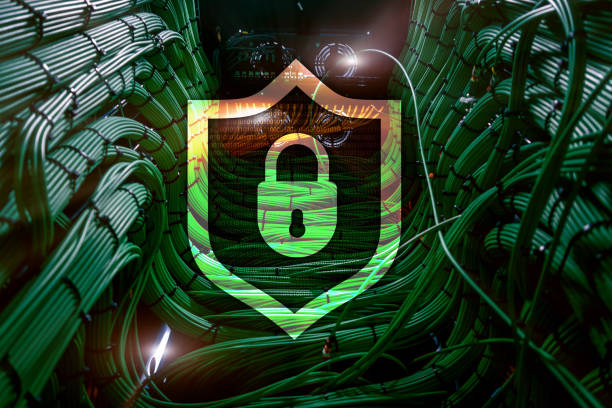October is Cybersecurity Awareness Month, a time dedicated to empowering individuals and businesses to protect themselves from the growing range of cyber threats. This year’s theme, “Secure Our World,” emphasizes simple, actionable steps everyone can take to bolster their online security. Whether you’re an individual, a small business, or an enterprise, maintaining cyber vigilance is critical. In this blog, we’ll explore four key ways to stay safe online and dive into the specific challenge of phishing—an issue that continues to plague users everywhere, and where Infoblox and our DNS threat intelligence capabilities shine.
Top Four Ways to Stay Safe Online
The National Cybersecurity Alliance outlines the following four ways to stay safe:
- Use Strong Passwords and a Password Manager
Weak or reused passwords are a major security risk. A strong password combines letters, numbers, and symbols. Using a password manager makes it easier to generate and store strong, unique passwords across your accounts. - Turn On Multifactor Authentication (MFA)
MFA adds an additional layer of security by requiring more than just a password to log in. Even if someone steals your password, they would need access to the second form of authentication, making it harder for attackers to breach your accounts. - Update Software Regularly
Software updates often contain patches for security vulnerabilities. Keeping your operating system, apps, and devices updated ensures that you’re protected from the latest threats. Enable automatic updates wherever possible. - Recognize and Report Phishing
Phishing attacks, where attackers try to trick you into revealing personal information, continue to be a major cyber threat. Knowing how to spot suspicious emails or messages is crucial. Report these attempts to your IT team or use your company’s security protocols to block them.
Phishing: Don’t Click That Link
In fact, phishing remains one of the most persistent and dangerous cybersecurity threats. Cybercriminals use phishing attacks to steal login credentials, personal information, and financial data, or to infect devices with malware. These attacks have evolved beyond suspicious-looking emails; phishing now includes text messages (smishing), fake websites, and even voice calls (vishing). Despite its variety, the goal is the same—luring unsuspecting users into giving up valuable information.
The 2024 Verizon Data Breach Investigations Report (DBIR) reports that the median time it takes users to fall for a phishing email is less than 60 seconds; 21 seconds to click on a link (after the email is opened) and 28 seconds to enter their data on a phishing site.
One of the most effective ways to defend against phishing is with domain name system (DNS) security. Phishing sites often rely on deceptive URLs (with subtle misspellings) and malicious domains to fool users. Threat actors attempt to obfuscate their intentions by constructing intricate architectures with thousands of domains, making coordinated communications appear random and unconnected. Monitoring and analyzing DNS threat intelligence data, including domain registration details, can unveil details about threat actor campaigns and identify phishing domains.
Infoblox DNS Security Approach
As the leader in DNS security, Infoblox leverages our extensive DNS threat intelligence data to detect and block known phishing sites before users even have a chance to click on the links (that direct them to these sites).
At the core of Infoblox’s solution is our ability to monitor and analyze DNS traffic; we process over 70+ billion DNS events daily. Since every online interaction involves a DNS query, we can detect communications to phishing sites and identify suspicious domains registered by known threat actor groups. When a phishing site is identified, Infoblox automatically blocks access, preventing users from inadvertently interacting with that domain. This proactive approach is especially useful for businesses where employees may be targeted by spear-phishing attacks, or highly personalized phishing attempts aimed at specific individuals or companies. This is complementary to other solutions like email security and secure web gateways because while email-delivered malware evade gateway and endpoint defenses up to 70% of the time, DNS remains impervious to methods like encryption, tunneling, Domain Generation Algorithms (DGAs), and lookalike domains.
DNS also provides an additional layer of threat defense throughout the attack lifecycle. For instance, if an email attack successfully installs a ‘downloader’ via a vulnerability in an email client or third-party cloud app, Infoblox can still thwart the attack before the attacker accomplishes his or her goal by identifying C2 communications or blocking data exfiltration via DNS. This means that with Infoblox in your arsenal of cybersecurity weapons, any time malware interacts with DNS, you have the ability to break the kill chain.
The effectiveness of using DNS for threat defense is unparalleled. In customer deployments, Infoblox Threat Defense combined with our unique Threat Intel has been able to proactively block attacks more than 60 days in advance of malware making a DNS query, with a false positive rate of 0.0002%.
(For more information, read our solution note on phishing and Krupa Srivatsan’s blogs on reducing mean time to detect and disrupting the ransomware supply chain.)
The Rise of Protective DNS and DNS Security Compliance
Governments around the world are embracing DNS as a security control to protect government, public sector and critical national infrastructure. With CISA releasing updated guidance for federal agencies to adopt Protective DNS and leverage encrypted DNS, the mandate for not just securing DNS but also leveraging it as foundational pillar for Cyber defense has never been so strong. As other governments around the world adopt the same strategy this guidance is expected to trickle down into industry baselines and even regulatory directives. As Infoblox executes DNS Health and Security assessments, many organizations are exposed to serious risks based on their current configurations and deployments. As the regulatory bar gets higher many organizations are likely to be surprised by how far they need to elevate their DNS security posture.
Securing Our World
When we consider how we live, work and play in the current post-pandemic environment, the lines between work and home are blurring. Most companies have a hybrid workforce that go into the office a few days a week, access personal applications (like gmail) on work laptops, or log onto work-related applications on personal mobile phones. Protecting against phishing attacks therefore is critical for both businesses and individuals alike. While we may not be able to stop every user from clicking on that cute cat video, we have the ability to use DNS and DNS threat intelligence to keep users protected even when that happens.
As we celebrate Cybersecurity Awareness Month, it’s a great reminder to implement core cybersecurity best practices—strong passwords, MFA, phishing awareness, and software updates—while considering advanced solutions like DNS security to stay ahead of emerging cyber threats and phishing attacks. At Infoblox, we are dedicated to helping you secure your world.








